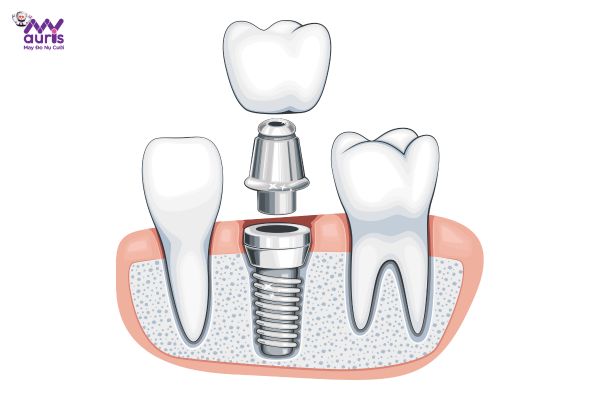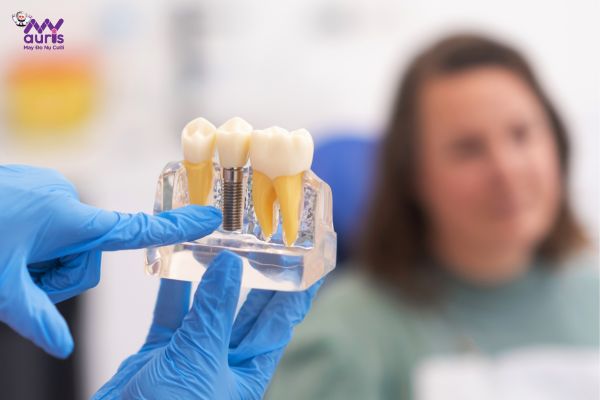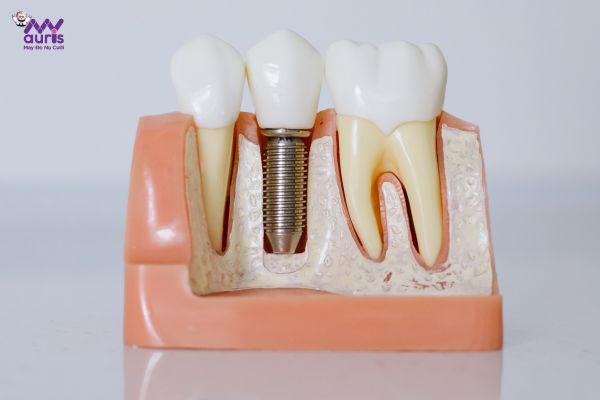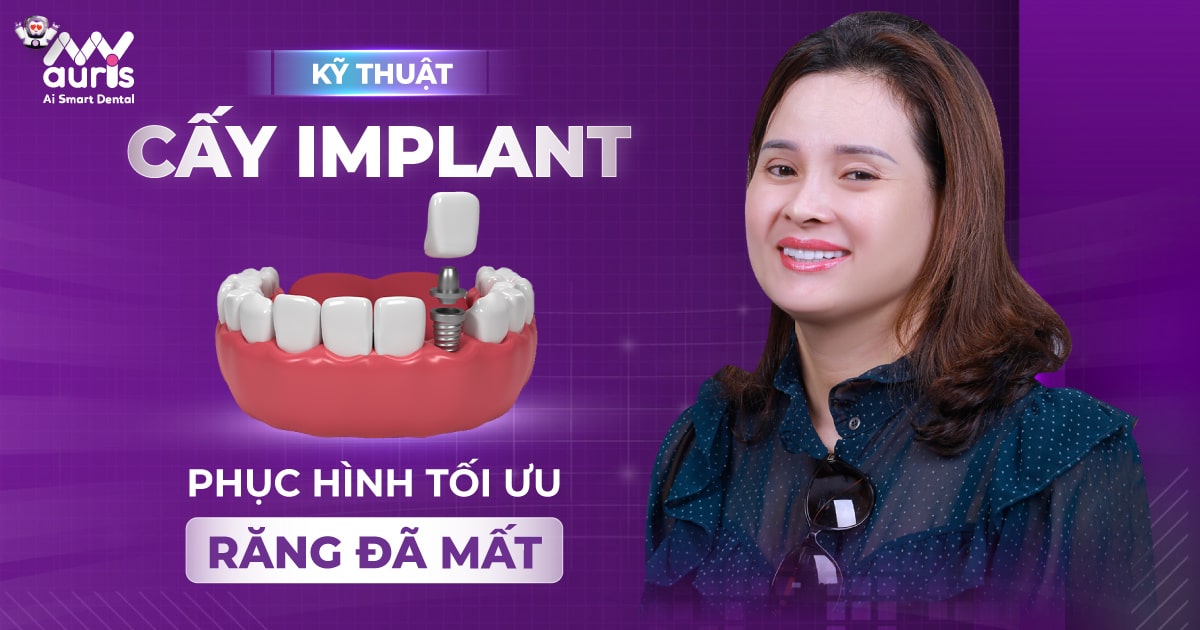Implant technique is a modern technique, bringing great progress in modern dentistry. Dental implants have a structure similar to missing teeth, so they are perfect restorations, bringing many benefits to oral health. To understand more about implant techniques, follow the following article with My Auris.
What is an implant?
Implants are also known by many names such as dental implants, dental implants, etc. This method was invented by Swedish doctor Per-Ingvar Branemark in 1952. Up to now, this dental implant method has been greatly improved, bringing superiority in restoring lost teeth.
Simply understood, implant surgery is the practice of placing dental implants with both crown and root into the space where a tooth is missing. In particular, the implant post acts as a real tooth root and the porcelain crown acts as a real tooth crown.

Advantages and disadvantages of the implant technique
Implant techniques are increasingly improved and made simpler than when they were first invented. Not only does it take 3-6 months for the implant to integrate into the jawbone, but today there is also an immediate implant method. This technique is performed immediately after tooth extraction.
Therefore, currently, many toothless customers prioritize choosing the implant restoration method to restore lost teeth. Here are some advantages and disadvantages of the implant technique.
Advantages of implant technique
- High aesthetics: dental implants cover gaps in the jaw, bringing aesthetics, helping people with tooth loss no longer feel self-conscious but smile and communicate more comfortably. At the same time, dental implants have the same structure as real teeth from root to crown, so when implanted, they exist like real teeth on the jaw, so it is very difficult to detect fake teeth.
- Restoring optimal chewing: among dental implant methods, implants bring high chewing ability by restoring up to 98-99% of the chewing force of real teeth. Furthermore, chewing food is firm, not loose or falling.
- Comfortable, no stress: porcelain bridges and removable dentures used to replace lost teeth can cause stress, discomfort and anxiety.Unfortunately, dentures can easily become loose and fall out. For dental implants, they exist firmly in the jaw, making it comfortable for the implanter and not causing any discomfort.
- Prevent jaw bone loss: dental implant technique is the only dental implant technique capable of preventing jaw bone loss caused by tooth loss. Jaw bone loss not only causes jaw deformity and imbalance but also affects facial aesthetics.
- Easy to clean and protect oral health: dental implants are as strong on the jaw as real teeth, so they are easy to clean and take care of oral health. From there, the occurrence of oral diseases, especially tooth decay, is limited.
- Independent implant technique: implant placement does not require grinding teeth like porcelain bridges or using metal hooks from dentures to affect real teeth. Therefore, dental implants help preserve natural teeth as much as possible.
- Long lifespan: on average, dental implants last 10-20 years. If well cared for and thoroughly cleaned, it can last up to 25 years or a lifetime. Dentists say that quality dental implants save money because they are used once and are used forever, without needing to be changed every 2-3 years like dentures or porcelain bridges.

Disadvantages of implant technique
Implant technique requires meticulousness and precision, therefore, this method has some disadvantages such as:
- Requires skilled, experienced, meticulous doctors with accurate diagnosis.
- Modern and advanced machinery and equipment to support the transplant process.

In addition, implants have a high cost, so it is also a factor that many people worry about.
How is the implant technique performed?
As mentioned, to successfully implant an implant, the implementation technique must ensure the correct process and sequence. The following are the standard steps in the implant technique:
Step 1: Examination, oral health check and consultation
Before performing the implant, the doctor will have to examine and check general oral health. Then, X-ray and CT Cone Beam are performed to clearly determine the condition of the jawbone and tooth loss.
After having the data, the doctor will advise and propose a suitable treatment plan as well as implant placement. Accordingly, the doctor will also advise on which types of implants are suitable for the jawbone, tooth socket and integration capabilities according to each customer’s needs and conditions.
Step 2: Treatment
For customers with dental diseases or jaw bone loss who are no longer eligible for implants, the doctor will have to thoroughly treat the symptoms of the disease or perform a jaw bone transplant first and then implant.
Step 3: Implant technique
The doctor performs oral hygiene and anesthetizes the area where the implant is needed. Next, place the implant into the jawbone right where the tooth was lost.
Step 4: Take tooth impressions and install temporary porcelain crowns
The doctor takes tooth and jaw impressions and sends them to the lab to make porcelain teeth. During this time, the doctor will install a temporary porcelain crown so that the customer can easily eat and drink as well as ensure aesthetics.
Step 5: Install the real ceramic crown
After the implant is firmly integrated with the jawbone, the doctor will install the real ceramic crown on top through the Abutment joint to complete the dental implant on the jaw.
Step 6: Schedule regular follow-up examinations and provide oral care instructions. The doctor will schedule regular follow-up visits to monitor and check oral health to ensure the implant lasts a long time and has good oral health.
In addition, after the dental implant is completed, the doctor will also instruct you on how to properly and appropriately clean and care for your teeth.

Hopefully with the information in the article about implant technique in this article helps people better understand this dental implant technique. From there, consider the situation and choose a reputable and quality dental facility for successful implant placement. Please contact My Auris Dental immediately for advice and to schedule an appointment for examination and oral health check as soon as possible.
Anh Thy





